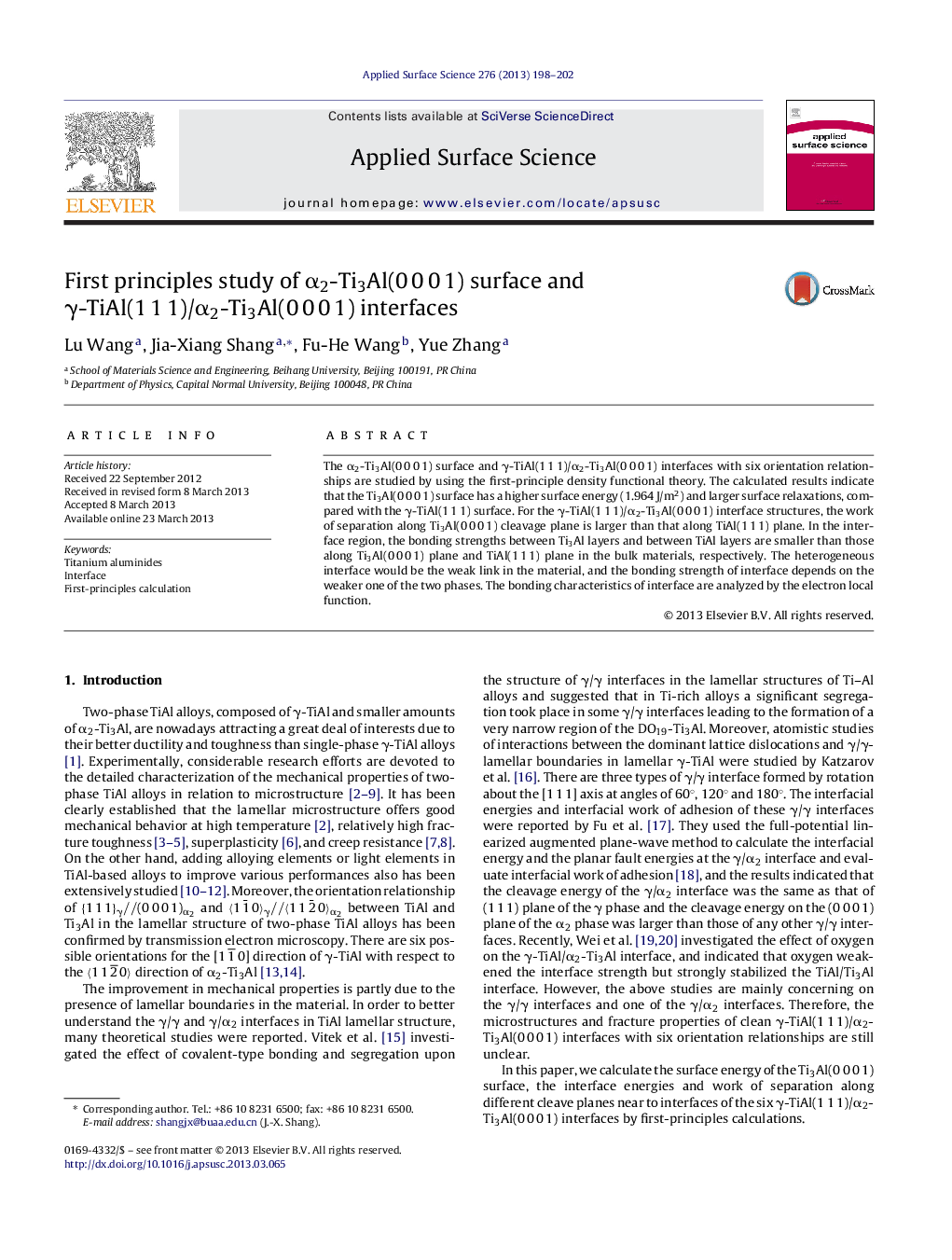| Article ID | Journal | Published Year | Pages | File Type |
|---|---|---|---|---|
| 5360067 | Applied Surface Science | 2013 | 5 Pages |
Abstract
The α2-Ti3Al(0 0 0 1) surface and γ-TiAl(1 1 1)/α2-Ti3Al(0 0 0 1) interfaces with six orientation relationships are studied by using the first-principle density functional theory. The calculated results indicate that the Ti3Al(0 0 0 1) surface has a higher surface energy (1.964 J/m2) and larger surface relaxations, compared with the γ-TiAl(1 1 1) surface. For the γ-TiAl(1 1 1)/α2-Ti3Al(0 0 0 1) interface structures, the work of separation along Ti3Al(0 0 0 1) cleavage plane is larger than that along TiAl(1 1 1) plane. In the interface region, the bonding strengths between Ti3Al layers and between TiAl layers are smaller than those along Ti3Al(0 0 0 1) plane and TiAl(1 1 1) plane in the bulk materials, respectively. The heterogeneous interface would be the weak link in the material, and the bonding strength of interface depends on the weaker one of the two phases. The bonding characteristics of interface are analyzed by the electron local function.
Related Topics
Physical Sciences and Engineering
Chemistry
Physical and Theoretical Chemistry
Authors
Lu Wang, Jia-Xiang Shang, Fu-He Wang, Yue Zhang,
